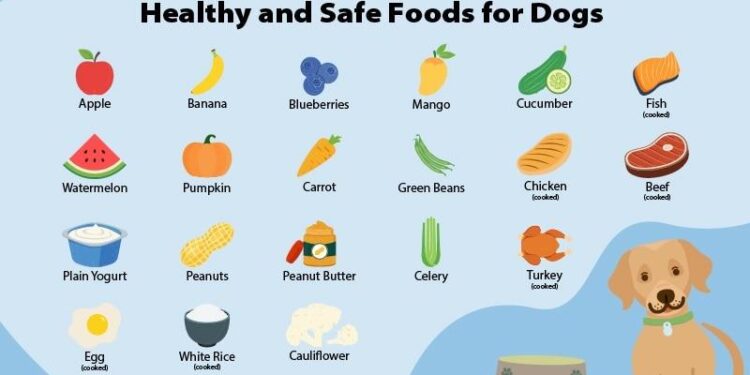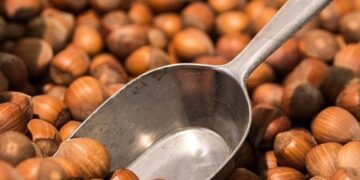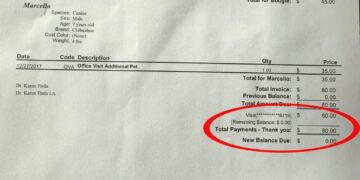Table of Contents
In a Nutshell: A Framework for Clarity
For dog owners navigating a Chronic Kidney Disease (CKD) diagnosis, the world of nutrition turns upside down.
This guide offers a new way to think about feeding your dog, especially when it comes to fish.
- The Core Problem: The primary challenge with fish is the Omega-3 vs. Phosphorus Paradox. Fish are rich in beneficial, anti-inflammatory omega-3 fatty acids, which are recommended for kidney support. However, many fish are also high in phosphorus, a mineral that is extremely dangerous for dogs with failing kidneys and must be strictly limited.
- The New Paradigm: Stop thinking about “good foods” and “bad foods.” Instead, think of your dog’s kidneys as a delicate, damaged filtration plant. Your job, alongside your veterinarian, is to reduce its workload. Every dietary choice must be evaluated based on how much “sludge” (phosphorus), “waste” (protein byproducts), and “pressure” (sodium) it adds to the system, versus how much “lubrication” (omega-3s) it provides.
- The Renal Fish Traffic Light System:
- Green Light (Low System Burden): Lean whitefish like Cod and Haddock. These are low in phosphorus and provide high-quality protein, making them the safest foundation for a fish-based meal or topper.
- Yellow Light (Strategic Use Only): Oily fish like Salmon and Sardines. They are packed with beneficial omega-3s but carry a high phosphorus load. Use them not as a meal, but as a potent, whole-food supplement in very small, calculated amounts to boost omega-3s without overwhelming the system.
- Red Light (High System Risk): Avoid Tilapia due to its poor omega-3 profile and farming concerns, and large predatory fish like Tuna, Swordfish, and King Mackerel due to the high risk of mercury contamination.
- The Hybrid Strategy: The optimal approach combines the best of both worlds. Use a high-quality fish oil supplement for a precise, potent, low-phosphorus dose of therapeutic omega-3s. Use small amounts of Green Light fish (like cod) as a palatable, high-quality protein source to encourage eating.
- The Golden Rule: This guide is an educational map to help you have a more informed conversation with your veterinarian. It is not a substitute for professional veterinary advice. Never make significant dietary changes for a dog with CKD without consulting your vet or a board-certified veterinary nutritionist.
Part I: The Phone Call That Changed Everything: A Diagnosis and a Deep Dive into Confusion
The words from the other end of the line hit me with a quiet, devastating force: “Charlie’s bloodwork came back.
I’m afraid he’s in the early stages of chronic kidney disease.”
My heart sank.
Charlie, my goofy, loyal, 11-year-old Golden Retriever, had been my shadow for over a decade.
He’d seemed a little more tired lately, drinking more water, but I’d chalked it up to old age.
Now, a single phone call had reframed everything.
The vet was calm and reassuring, outlining the next steps.
The most immediate and critical action, she explained, was a change in diet.
“We need to switch him to a therapeutic renal diet,” she said.
“These are specially formulated to be low in protein, phosphorus, and sodium.
And you should look into adding some fish to his diet; the omega-3s are very good for slowing the progression”.1
Armed with a diagnosis and a directive, I did what any worried pet owner in the 21st century does: I turned to the internet.
My search history became a frantic litany of “best food for dog kidney disease,” “low phosphorus dog food,” and “best fish for dogs with CKD.” I expected to find clarity.
Instead, I found chaos.
The Rabbit Hole of “Dr. Google”: When “Healthy” Becomes Harmful
The first few articles were straightforward, echoing my vet’s advice about restricting phosphorus and protein.4
But as I ventured deeper, into forums and blogs written by passionate dog owners, the consensus shattered.
One group swore by high-protein, raw-food diets, claiming that prescription kibble was “garbage” and that dogs with kidney disease needed high-quality protein more than ever.7
Another group warned that this very approach was poison, accelerating the disease and causing unnecessary suffering.8
I felt a rising sense of panic.
The entire paradigm of what I considered “healthy” for Charlie was being turned on its head.
For years, I had prided myself on buying him premium, grain-free food with salmon as the first ingredient.
Salmon was the gold standard—celebrated for its rich protein and omega-3s that kept his coat gleaming.9
Now, I was reading that this very “healthy” food could be a danger.
This inversion of knowledge was terrifying.
A well-intentioned decision, based on years of accepted wisdom about canine nutrition, could now actively harm my best friend.
It felt like a trap, where a loving owner’s best efforts could lead to the worst outcomes.
This feeling was compounded by the stories of other owners.
I read heartbreaking accounts of dogs who refused to eat the bland, unpalatable prescription diets, wasting away not from the disease, but from starvation.8
Owners described the “nightmare” of trying to coax their sick, nauseous companions to eat food they clearly hated.8
The buildup of toxins from kidney disease, known as uremia, often causes nausea and a lack of appetite, leading to a dangerous cycle of food aversion.3
The “best” diet in the world is useless if the dog won’t eat it, and the emotional toll of watching your dog refuse food is a heavy burden for any owner to bear.12
The Central Problem Identified: The Omega-3 vs. Phosphorus Paradox
After days of spiraling through conflicting advice, I finally managed to distill my confusion into a single, maddening question.
It was the central paradox of feeding fish to a dog with kidney disease: How could I possibly provide the anti-inflammatory omega-3 fatty acids my vet recommended without simultaneously delivering a dangerous dose of the phosphorus that came with them?
It seemed like an impossible trade-off.
Every article praised omega-3s for reducing kidney inflammation 3, yet the best sources of omega-3s—oily fish like salmon—were also rich in phosphorus.15
And phosphorus, I was learning, was the primary villain in this story, a mineral that failing kidneys can no longer excrete, leading to a cascade of devastating effects that actively accelerate the disease.16
I was stuck.
I needed a new way to see the problem, a framework that could help me move beyond a simple list of “good” and “bad” foods and start making intelligent, safe decisions for Charlie.
Part II: The Epiphany: It’s Not a Food Problem, It’s a Systems Problem
The breakthrough didn’t come from a new article or a secret forum.
It came late one night, staring at a spreadsheet of nutritional data, when I realized I was asking the wrong question.
I had been fixated on ingredients, asking, “Is salmon good?” or “Is cod bad?” The real question I needed to ask was, “What does Charlie’s system need?”
That shift in perspective changed everything.
I stopped thinking about individual foods and started thinking about the job his kidneys were struggling to do.
And that’s when the analogy that would become my guiding principle clicked into place.
The Central Analogy: Your Dog’s Kidneys as a Delicate Filtration Plant
Imagine your dog’s kidneys are a highly sophisticated, once-powerful water filtration plant.
For years, this plant has worked flawlessly, 24/7, purifying the body’s entire water supply, removing toxins and waste products with incredible efficiency.
But now, due to age and wear, the plant has sustained significant damage.
Its filters are partially clogged, its machinery is fragile, and its overall capacity is drastically reduced.
It can no longer handle a heavy load of raw, unfiltered water.
If you keep pumping in the same volume and quality of water as before, the system will quickly become overwhelmed.
The filters will clog completely, the machinery will break down under the strain, and the entire plant will grind to a halt.
The goal of a renal diet, then, is not just to provide “fuel” for the body.
The primary goal is to become the plant’s pre-treatment facility.
It’s about carefully managing everything that goes into the plant to reduce its workload, prevent further damage, and preserve its remaining function for as long as possible.
This systems-thinking approach was the key.
It moved me from being a confused consumer of conflicting advice to an informed manager of Charlie’s internal environment.
Abstract concepts from veterinary papers, like “glomerular filtration rate” and “uremic toxins,” became tangible ideas like “flow rate” and “sludge.” With this new mental model, I could finally start to understand the “why” behind the dietary rules and build a logical, coherent plan.
Part III: The Four Levers of Renal Care: Mastering Your Dog’s Dietary Control Panel
Using the filtration plant analogy, the complex rules of the canine renal diet suddenly became clear.
They weren’t arbitrary restrictions; they were four critical levers on the plant’s control panel.
My job, in partnership with my vet, was to learn how to operate these levers to keep Charlie’s system running as smoothly as possible.
Lever 1: The Waste-Load Lever (Phosphorus & Protein)
This is the most important lever.
It controls the amount of heavy solids and waste byproducts entering the plant.
- Phosphorus as “Sludge”: In our analogy, phosphorus is the thick, heavy sludge that is most likely to clog the delicate filters of the kidneys. When the kidneys are healthy, they easily filter out excess phosphorus. But in CKD, this ability is severely diminished.17 Phosphorus builds up in the blood, triggering a hormonal cascade that pulls calcium from the bones and causes dangerous mineral deposits in soft tissues, actively worsening the kidney damage.16 For this reason,
phosphorus restriction is the single most critical dietary intervention for slowing the progression of CKD.17 Studies have shown that diets low in phosphorus can significantly extend both the quality and quantity of life for dogs with kidney disease.11 - Protein as “Raw Material”: Protein is the essential raw material the body needs for everything from muscle maintenance to immune function. However, when the body metabolizes protein, it creates nitrogenous waste products (like urea and creatinine). In our analogy, these are the toxic “exhaust fumes” from processing the raw material. Healthy kidneys filter these fumes out effortlessly. Failing kidneys struggle, allowing these toxins to build up in the bloodstream—a condition called uremia—which is what makes a dog feel sick, nauseous, and lethargic.3 The goal, therefore, is not to eliminate protein, but to be incredibly efficient. This means providing just enough of the highest-quality, most easily digestible protein to meet the body’s needs without creating an excess of toxic waste.16 It’s crucial to understand that in most animal-based foods,
protein and phosphorus levels are directly linked; where you find high protein, you almost always find high phosphorus.1 This is why protein is often restricted—it’s one of the primary ways to control the phosphorus “sludge.”
Lever 2: The System-Pressure Lever (Sodium)
Think of sodium as the pressure gauge for the entire filtration plant.
While some sodium is necessary, excessive amounts force the system to work under high pressure, straining the pipes and machinery.
For a dog with CKD, this can contribute to high blood pressure (hypertension), which further damages the delicate blood vessels within the kidneys.1
Reducing sodium intake helps lower the workload on the kidneys and maintain healthier blood pressure.17
This means being vigilant not only about their main meals but also about treats, as many common favorites like cheese or jerky are extremely high in sodium.6
Lever 3: The Anti-Corrosion Lever (Omega-3 Fatty Acids)
This is where fish, when chosen correctly, becomes a powerful ally.
Omega-3 fatty acids—specifically eicosapentaenoic acid (EPA) and docosahexaenoic acid (DHA)—act as a vital lubricant and anti-corrosion agent within the filtration plant.
CKD is an inflammatory disease, and this chronic inflammation is like rust, slowly corroding the kidney’s delicate machinery.
EPA and DHA have potent anti-inflammatory properties that help to reduce this “rust,” protecting the remaining kidney structures and slowing the rate of decline.3
Numerous studies have shown that supplementing the diet with these specific omega-3s can improve kidney function and prolong the life of dogs with CKD.14
Lever 4: The Coolant Lever (Hydration)
Water is the essential coolant that allows the entire filtration plant to operate.
Without enough fluid moving through the system, toxins concentrate, and the machinery overheats and seizes.
Dogs with CKD are unable to concentrate their urine effectively, meaning they lose more water and are in a constant state of mild dehydration.11
Ensuring a high moisture intake is therefore critical.
This can be achieved by providing constant access to fresh, clean water and, most importantly, by feeding a moisture-rich diet, such as canned therapeutic food or a properly formulated homemade diet with added water.3
Dry kibble, which is very low in moisture, can exacerbate dehydration in a kidney patient.7
| The Renal Diet Control Panel | |||
| Lever | Filtration Plant Analogy | Biological Goal | Dietary Action |
| Phosphorus & Protein | Reduce “sludge” and toxic “exhaust fumes” | Slow disease progression and minimize uremic toxins | Feed strictly controlled, low levels of phosphorus and moderate amounts of high-quality, easily digestible protein. |
| Sodium | Lower the system’s operating “pressure” | Control blood pressure and reduce kidney workload | Feed a diet with restricted sodium levels; avoid salty treats. |
| Omega-3 Fatty Acids | Apply an “anti-corrosion” agent to protect machinery | Reduce inflammation and oxidative stress in the kidneys | Supplement with therapeutic levels of EPA and DHA from fish or fish oil. |
| Hydration | Maintain adequate “coolant” levels | Prevent dehydration and help flush toxins | Ensure high water intake, primarily through a moisture-rich diet (canned or fresh food). |
Part IV: The Renal Fish Matrix: A Traffic Light System for Safe Choices
With the “Filtration Plant” framework and the “Four Levers” established, I could finally analyze fish with clarity.
Instead of a confusing list of pros and cons, I could now plot each type of fish on a matrix, evaluating it based on its real impact on Charlie’s system.
This led me to create a simple “traffic light” system to guide my choices.
Green Light Fish (Low System Burden – Use as a Base)
These are the fish that place the least amount of stress on the filtration plant.
They are the safest and most reliable choices to use as a primary protein source in a homemade meal or as a significant topper for a prescription diet.
- Cod, Haddock, Pollock, and other lean whitefish: These fish are the undisputed champions for a renal diet. They offer an excellent source of high-quality, easily digestible protein, which means the body can utilize it efficiently with minimal waste.23 Most importantly, they are naturally low in phosphorus, the most dangerous “sludge” for the kidneys.15 While their omega-3 content is lower than that of oily fish, their exceptionally low phosphorus and fat profile makes them a clear winner. They provide the benefits of a palatable animal protein without the high costs associated with phosphorus and fat, making them an ideal foundation.23
Yellow Light Fish (Strategic Use Only – Use as a Supplement)
These fish are nutritional powerhouses, but they come with a significant trade-off.
They are rich in the “anti-corrosion” omega-3s but also carry a heavy load of “sludge” (phosphorus).
They should never be used as a primary protein source but can be deployed strategically in very small, measured quantities to act as a whole-food supplement.
- Salmon: This is the classic example of the Omega-3 vs. Phosphorus Paradox. A serving of salmon delivers a potent dose of anti-inflammatory EPA and DHA, far more than any whitefish.27 However, it also contains significantly more phosphorus.15 The key is a mental shift:
salmon is not a meal; it is a supplement. A tiny, flaked amount mixed into a meal can boost omega-3s without drastically increasing the total daily phosphorus load. When choosing salmon, wild-caught is generally preferred over farmed, as farming practices can alter the fatty acid profile and introduce other variables.28 - Sardines: Sardines are even more potent and more complicated. They are bursting with omega-3s, and because the bones are typically consumed, they are also an incredible source of calcium and vitamin D.30 Unfortunately, those same bones make them extremely high in phosphorus.32 Like salmon, they must be viewed as a powerful but risky supplement. If used, it should be in minuscule amounts (e.g., a fraction of a single sardine) and only the variety packed in water with
no salt added, as those packed in oil or brine add unnecessary fat and dangerous levels of sodium.34
Red Light Fish (High System Risk – Avoid)
These fish present an unacceptably high risk to the filtration plant, with downsides that far outweigh any potential benefits.
- Tilapia: While low in fat, tilapia is a poor choice for a renal diet. It has a very low omega-3 content, comparable to cod, but a much less favorable ratio of omega-6 to omega-3 fatty acids, which can be pro-inflammatory—the opposite of our goal.35 Furthermore, its phosphorus level is moderately high, offering a poor trade-off for its minimal omega-3 benefits.26 The most significant concern, however, lies in its sourcing. The vast majority of tilapia is farm-raised, often in conditions with poor regulation, leading to potential exposure to antibiotics and other contaminants.35 For a dog with a compromised system, these risks are simply not worth taking.
- Tuna, Swordfish, King Mackerel, Shark: These large, long-living predatory fish are at the top of the aquatic food chain. This means they accumulate heavy metals from the smaller fish they eat, resulting in dangerously high levels of mercury.39 Mercury is a potent neurotoxin that a healthy dog’s system struggles to process; for a dog with failing kidneys, it represents another poison that the filtration plant simply cannot handle. Canned light tuna has lower mercury levels than albacore, but the risk, combined with high sodium content in many canned varieties, places it firmly in the “avoid” category.38
| The Renal Fish Comparative Analysis (per 100g cooked portion) | ||||
| Fish Type | Protein (g) | Phosphorus (mg) | Sodium (mg) | Omega-3s (EPA+DHA, mg) |
| Cod (Atlantic) | ~20 g | ~200 mg | ~80 mg | ~140 mg |
| Salmon (Atlantic) | ~22 g | ~315 mg | ~70 mg | ~1,800 mg |
| Sardines (in water) | ~25 g | ~490 mg | ~307 mg | ~980 mg |
| Tilapia | ~26 g | ~204 mg | ~56 mg | ~140 mg |
Data synthesized from sources.15
Values are approximate and can vary based on specific type and preparation.
This table makes the trade-offs crystal clear.
Cod and Tilapia have similar nutritional profiles on paper, but Cod is the safer choice due to sourcing concerns with Tilapia.
The data starkly illustrates why Salmon and Sardines are “Yellow Light”: their phenomenal omega-3 content comes at a very high phosphorus cost.
This quantitative view empowers an owner to see precisely why these choices matter so much.
Part V: The Great Debate: A Piece of Fish or a Drop of Oil?
Understanding which fish to use is only half the battle.
The next critical question is how to best deliver the “anti-corrosion” omega-3s.
Should I be meticulously measuring out tiny flakes of salmon, or should I just use a fish oil supplement? This question pits the natural appeal of whole foods against the precision of modern supplements.
The Case for Whole Fish
There are two compelling reasons to include small amounts of whole fish in a renal diet, even if a supplement is also being used.
- Palatability: This is arguably the most significant practical benefit. As we’ve seen, dogs with CKD are often nauseous and have poor appetites.11 A therapeutic renal diet, being lower in the protein and fat that dogs find appealing, can be a hard sell.13 A small amount of a flavorful, safe fish like baked cod, or even a tiny crumb of salmon, mixed into their food can be a powerful enticement. It can be the difference between a dog eating a full, balanced meal and turning their nose up at it entirely. In this context, the fish acts less as a nutrient source and more as a life-saving flavor enhancer.8
- Nutrient Synergy: Whole foods provide a complex matrix of nutrients that work together. Whole fish contains not just omega-3s, but also highly bioavailable protein, selenium, vitamin D, B vitamins, and antioxidants like Coenzyme Q10 (especially in sardines).30 While supplements can isolate specific compounds, whole foods offer a broader nutritional package that may have synergistic benefits.
The Case for Fish Oil Supplements
For delivering a therapeutic, anti-inflammatory dose of omega-3s, a high-quality supplement is superior for several key reasons.
- Precision and Potency: This is the most crucial advantage. Supplements allow you to provide a precise, veterinarian-recommended dose of EPA and DHA without adding significant amounts of phosphorus, protein, or calories.14 It allows you to fully operate the “Anti-Corrosion Lever” without dangerously overloading the “Waste-Load Lever.” Trying to achieve the same therapeutic dose of omega-3s with whole salmon, for example, would require feeding an amount that would deliver a toxic level of phosphorus.
- Purity and Safety: Reputable fish oil manufacturers use processes like molecular distillation to remove heavy metals like mercury and other environmental contaminants.43 This offers a layer of safety that is difficult to guarantee with whole fish, especially larger species.40
However, not all fish oils are created equal.
It’s vital to be aware of the risks.
Fish oil is highly susceptible to oxidation, or becoming rancid.
Rancid oil is not only ineffective but is actively pro-inflammatory, doing more harm than good.21
To mitigate this, it’s best to choose a reputable, third-party tested brand that is sold in capsules rather than a large liquid bottle, as capsules protect the oil from repeated exposure to oxygen.45
Potential side effects like GI upset can also occur, especially with high doses.43
The Architect’s Verdict: A Hybrid Strategy
After weighing the evidence, it became clear that the optimal approach wasn’t an “either/or” choice but a sophisticated “both/and” strategy.
The most effective plan involves using a high-quality, encapsulated fish oil supplement as the primary engine for delivering a precise, therapeutic dose of anti-inflammatory EPA and DHA. This is the non-negotiable foundation for actively managing the disease at a cellular level.
Then, use small amounts of Green Light fish (like baked cod) as a functional tool—either as part of a balanced homemade meal formulated by a nutritionist or as a highly palatable topper to encourage a picky dog to eat their prescription diet.
This hybrid approach leverages the precision of the supplement and the practical, appetite-stimulating benefits of the whole food, creating a comprehensive and effective nutritional plan.
Part VI: The Non-Negotiables: Your Kitchen, Your Vet, Your Path to Success
Armed with this new framework, I felt a sense of control I hadn’t experienced since that first phone call.
But knowledge is only powerful when applied correctly and safely.
The final pieces of the puzzle were establishing strict protocols in my kitchen and, most importantly, reinforcing my partnership with our veterinarian.
The Safe Kitchen: Preparation is Paramount
If you choose to prepare fish at home, there is no room for error.
The compromised system of a CKD dog cannot handle the additional burden of foodborne illness or injury.
- Cooking is Mandatory: Never feed raw fish to a dog, especially one with a chronic illness. Raw fish can harbor dangerous bacteria like Salmonella and Listeria, as well as parasites that can cause severe illness.47 The American Veterinary Medical Association (AVMA) strongly discourages the feeding of any raw animal-source protein to pets due to the significant health risks to both the animal and the humans in the household.49
- Simple Cooking Methods are Best: The safest ways to prepare fish are to steam, poach, or bake it. These methods require no additional fats or oils. Critically, you must use no salt, spices, garlic, onions, or other seasonings, many of which are toxic to dogs or add dangerous levels of sodium.50 The goal is plain, cooked fish.
- Deboning is a Life-or-Death Step: This cannot be overstated. Fish bones are sharp and brittle. They pose a severe choking hazard and can easily puncture the esophagus, stomach, or intestines, leading to a life-threatening emergency that requires surgery.47 You must meticulously remove every single bone before feeding any piece of fish to your dog. If you are not 100% confident in your ability to do this, opt for boneless fillets from a trusted fishmonger.
The Essential Partnership: Your Veterinarian as Co-Pilot
This guide is designed to make you a more informed, effective partner in your dog’s care.
It is an educational tool, not a prescription.
The single most important element of managing your dog’s CKD is the guidance of your veterinary team.
- This Guide is a Map, Not a Destination: The information here provides a framework for understanding the principles of renal nutrition. However, every dog is an individual. The correct diet and dosage of supplements for your dog depends on the specific stage of their disease, their concurrent health issues, their body condition, and their bloodwork results. Only your veterinarian can synthesize this information to create a safe and effective treatment plan.3
- The Dangers of “DIY” Diets: While the desire to cook for a sick pet comes from a place of love, it is fraught with peril. Multiple veterinary studies have analyzed recipes for homemade pet diets found in books and online and found the overwhelming majority to be nutritionally incomplete and unbalanced.52 These deficiencies can cause serious harm over time, especially to an animal whose body is already under immense stress from disease. The unified stance of the AVMA and the American Animal Hospital Association (AAHA) is to strongly caution against the use of unvetted homemade diets.55
- The Gold Standard: Consulting a Board-Certified Veterinary Nutritionist: If you are committed to feeding a homemade diet, the only safe way to do so is to work directly with a board-certified veterinary nutritionist (ACVN). These specialists have the expertise to formulate a custom diet that is complete, balanced, and tailored precisely to your dog’s unique medical needs.53 Your primary veterinarian can refer you to one. This is not an unnecessary expense; it is the gold standard of care that ensures you are helping, not harming.
Conclusion: From Helpless to Hopeful
The journey that began with a terrifying phone call has transformed into a mission.
The initial paralysis I felt, lost in a sea of conflicting information, has been replaced by a quiet confidence.
The “Filtration Plant” analogy gave me a lens to understand the disease, and the “Four Levers” gave me a sense of agency.
Today, Charlie is on a therapeutic diet prescribed by our vet, supplemented with a precise dose of high-quality fish oil.
Some days, when his appetite wanes, I mix in a small amount of plain, baked cod, and he cleans his bowl.
We work as a team—me, Charlie, and our veterinary team—managing his system, monitoring his bloodwork, and adjusting the levers as needed.
A diagnosis of Chronic Kidney Disease is not a death sentence; it is a management challenge.
While there is no cure, a proactive, informed, and collaborative approach to nutrition can make a profound difference.
It can slow the progression of the disease, minimize the symptoms that make our dogs feel unwell, and grant them months, or even years, of happy, comfortable life.11
By moving from a state of fear to one of informed action, we can give our beloved companions the greatest gift of all: more good days by our side.
Works cited
- Diet for Dogs With Kidney Failure | Badger Veterinary Hospital | Janesville Vet, accessed August 15, 2025, https://www.badgervet.com/site/blog/2024/04/30/diet-dogs-kidney-failure
- What is the best diet for dogs with kidney disease? | Cordova Vet, accessed August 15, 2025, https://www.germantownah.com/site/blog-memphis-vet/2020/09/23/best-diet-for-dogs-with-kidney-disease
- Nutrition for Dogs with Chronic Kidney Disease | VCA Animal …, accessed August 15, 2025, https://vcahospitals.com/know-your-pet/nutrition-for-dogs-with-chronic-kidney-disease
- What should I feed my dog with kidney disease? – LakeCross Veterinary Hospital, accessed August 15, 2025, https://www.lakecross.com/site/blog-huntersville-vet/2021/07/30/dog-kidney-failure-diet
- What is the best diet for a dog with kidney failure? | Vienna, accessed August 15, 2025, https://www.hopecentervet.com/site/blog/2024/08/15/best-diet-dog-kidney-failure
- What is the best diet for dogs with kidney failure? | North Providence Vets, accessed August 15, 2025, https://www.fergusonanimalhospital.com/site/blog/2024/08/31/diet-dogs-kidney-failure
- Canine Diet For Kidney Failure – Dogs Naturally, accessed August 15, 2025, https://www.dogsnaturallymagazine.com/canine-diets-for-kidney-failure/
- Early Stage Kidney Disease and Diet | Dog Food Advisor, accessed August 15, 2025, https://www.dogfoodadvisor.com/forums/topic/early-stage-kidney-disease-and-diet/
- The Benefits of Salmon for Dogs – Shop LP – Loving Pets, accessed August 15, 2025, https://lovingpetsproducts.com/blog/the-benefits-of-salmon-for-dogs/
- Why Salmon is one of the Best Foods for Dogs | Addiction Pet, accessed August 15, 2025, https://addictionpet.com/blog/why-salmon-is-one-of-the-best-foods-for-dogs/
- Kidney Failure in Dogs and The Right Diet | Cola’s Kitchen Blog, accessed August 15, 2025, https://colaskitchen.com/blog-posts/dog-diet-kidney-failure
- Kidney Disease Information – Veterinary Emergency Clinic, accessed August 15, 2025, https://vectoronto.com/wp-content/uploads/2023/11/Kidney-Disease-Info.pdf
- Kidney Disease and Renal Failure in Dogs – Blue Cross, accessed August 15, 2025, https://www.bluecross.org.uk/advice/dog/health-and-injuries/kidney-failure-and-disease-in-dogs
- Fish Oil for Dogs: Benefits, Dosage, and Vet Pick | PetMD, accessed August 15, 2025, https://www.petmd.com/dog/general-health/fish-oil-for-dogs
- Which Fish Are Best to Eat with Kidney Disease? – National Kidney Foundation, accessed August 15, 2025, https://www.kidney.org/kidney-topics/fish
- Dietary Guidelines for Dogs with Chronic Kidney Disease (CKD), accessed August 15, 2025, https://todaysveterinarypractice.com/nutrition/diet-dogs-ckd-chronic-kidney-disease/
- Renal Failure Dietary Therapy – Veterinary Partner – VIN, accessed August 15, 2025, https://veterinarypartner.vin.com/doc/?id=4952670
- Renal diets for veterinary patients: What to feed and when to start – DVM360, accessed August 15, 2025, https://www.dvm360.com/view/renal-diets-veterinary-patients-what-feed-and-when-start
- What to Feed a Dog with Kidney Disease | Darwin’s Natural Pet Products, accessed August 15, 2025, https://www.darwinspet.com/blogs/health-issues/what-to-feed-a-dog-with-kidney-disease
- What To Feed a Dog With Kidney Disease – PetMD, accessed August 15, 2025, https://www.petmd.com/dog/nutrition/what-feed-dog-kidney-disease
- Fishy Business: Selecting the Best Fish Oil for Dogs – Whole Dog Journal, accessed August 15, 2025, https://www.whole-dog-journal.com/nutrition/fishy-business-selecting-the-best-fish-oil-for-dogs/
- Is there a role for dietary polyunsaturated fatty acid supplementation in canine renal disease? – PubMed, accessed August 15, 2025, https://pubmed.ncbi.nlm.nih.gov/9868261/
- Can Dogs Eat Cod Fish? – Alaskan Salmon Company, accessed August 15, 2025, https://aksalmonco.com/blogs/learn/can-dogs-eat-cod-fish
- White Fish & Sweet Potato Recipe – Just Food For Dogs, accessed August 15, 2025, https://www.justfoodfordogs.com/product/fish-sweet-potato/10040103.html
- Cod Nutrition Facts and Health Benefits – Verywell Fit, accessed August 15, 2025, https://www.verywellfit.com/cod-nutrition-facts-and-health-benefits-5075574
- Cod vs. Tilapia — Health Impact and Nutrition Comparison, accessed August 15, 2025, https://foodstruct.com/compare/cod-vs-tilapia
- Seafood Nutrition Overview | SEAFOOD HEALTH FACTS, accessed August 15, 2025, https://www.seafoodhealthfacts.org/nutrition/seafood-nutrition-overview/
- Salmon Nutrition: Health Benefits Explained – Healthline, accessed August 15, 2025, https://www.healthline.com/nutrition/salmon-nutrition-and-health-benefits
- Omega-3 Fatty Acids – Health Professional Fact Sheet – NIH Office of Dietary Supplements, accessed August 15, 2025, https://ods.od.nih.gov/factsheets/Omega3FattyAcids-HealthProfessional/
- Sardines For Dogs? 7 Ways It’s Simply The Best – Oma’s Pride, accessed August 15, 2025, https://omaspride.com/blogs/articles/sardines-for-dogs
- Sardines: Health Benefits, Nutritional Info & Potential Risks – WebMD, accessed August 15, 2025, https://www.webmd.com/diet/health-benefits-sardines
- Sardines nutrition: calories, carbs, GI, protein, fiber, fats, accessed August 15, 2025, https://foodstruct.com/food/fish-sardine-atlantic-cannedinoil-drainedsolidswithbone
- 13 Foods That Are High in Phosphorus – GoodRx, accessed August 15, 2025, https://www.goodrx.com/well-being/diet-nutrition/foods-high-in-phosphorus
- Can dogs eat sardines? | Vet Verified Answer | Pooch & Mutt, accessed August 15, 2025, https://www.poochandmutt.co.uk/blogs/can-dogs-eat/sardines
- Can dogs eat tilapia? – BetterPet, accessed August 15, 2025, https://www.betterpet.com/learn/can-dogs-eat-tilapia
- Can Dogs Eat Tilapia? A Comprehensive Guide to Feeding Your Pup This Popular Fish | Houndsy, accessed August 15, 2025, https://www.houndsy.com/blogs/modern-tails/can-dogs-eat-tilapia-a-comprehensive-guide-to-feeding-your-pup-this-popular-fish
- Tilapia nutrition facts: calories, carbs, GI, protein, fiber, fats, accessed August 15, 2025, https://foodstruct.com/food/tilapia
- Is Fish Safe for Dogs to Eat? – Stella & Chewy’s, accessed August 15, 2025, https://www.stellaandchewys.com/blogs/articles/is-fish-safe-for-dogs-to-eat
- Can Dogs Eat Fish? 6 Types of Fish Dogs Can Eat – 2025 – MasterClass, accessed August 15, 2025, https://www.masterclass.com/articles/can-dogs-eat-fish
- Surf’s Up: Can Dogs Have Seafood Safely in Their Diet? – Volhard Dog Nutrition, accessed August 15, 2025, https://www.volharddognutrition.com/blog/surfs-up-can-dogs-have-seafood-safely-in-their-diet/
- Can Dogs Eat Sardines? – Nature’s Logic, accessed August 15, 2025, https://natureslogic.com/blog/can-dogs-eat-sardines/
- Can Dogs Eat Fish? Yes! – DogCancer.com, accessed August 15, 2025, https://www.dogcancer.com/articles/diet-and-lifestyle/can-dogs-eat-fish/
- Fish Oil – VCA Animal Hospitals, accessed August 15, 2025, https://vcahospitals.com/know-your-pet/fish-oil
- How to choose the best fish oil for your dog | Kristina Johansen, accessed August 15, 2025, https://www.kristinajohansen.com/dog-nutritionist/best-fish-oil-for-dogs/
- How to Choose the Best Omega Oil for Pets – My Pet Nutritionist, accessed August 15, 2025, https://mypetnutritionist.com/post/how-to-choose-the-best-omega-oil-for-pets/
- Is Fish Oil Bad for Dogs? The Vet-Approved Truth You Need to Know – Noble Veterinary Clinics in Dubai, accessed August 15, 2025, https://noblevetclinic.com/blog/is-fish-oil-bad-for-dogs
- Can Dogs Eat Fish? | Purina US, accessed August 15, 2025, https://www.purina.com/articles/dog/feeding/can-dogs-eat/fish
- Can Dogs Eat Fish? How to Prepare Fish Safely – Native Pet, accessed August 15, 2025, https://nativepet.com/blogs/health/can-dogs-eat-fish
- Raw diets for dogs and cats | American Veterinary Medical Association, accessed August 15, 2025, https://www.avma.org/resources-tools/avma-policies/raw-or-undercooked-animal-source-protein-cat-and-dog-diets
- Feeding guide for dogs with advanced kidney disease – VNG – Veterinary Nutrition Group, accessed August 15, 2025, https://www.vngpets.com/pages/feeding-guide-for-dogs-with-advanced-kidney-disease
- Can Dogs Eat Fish? A Guide to Fish for Dogs – Dog Child, accessed August 15, 2025, https://dogchild.co/blogs/learn/can-dogs-eat-fish-a-guide-to-fish-for-dogs
- Evaluation of recipes for home-prepared diets for dogs and cats with chronic kidney disease, accessed August 15, 2025, https://pubmed.ncbi.nlm.nih.gov/22332622/
- Homemade Diets for Cats and Dogs with Kidney Disease–Most Recipes are Wrong, accessed August 15, 2025, https://skeptvet.com/2012/03/homemade-diets-for-cats-and-dogs-with-kidney-disease-most-recipes-are-wrong/
- Assessment of commercial diets and recipes for home-prepared diets recommended for dogs with cancer in – AVMA Journals, accessed August 15, 2025, https://avmajournals.avma.org/view/journals/javma/241/11/javma.241.11.1453.xml
- Why is a good diet important for my pet? – Animal Emergency & Specialty Center of Chattanooga, accessed August 15, 2025, https://chattanoogaspecialty.vet/importance-of-good-diet/
- Current knowledge about the risks and benefits of raw meat–based diets for dogs and cats in – AVMA Journals, accessed August 15, 2025, https://avmajournals.avma.org/view/journals/javma/243/11/javma.243.11.1549.xml
- Nutritional Management of Chronic Kidney Disease in Cats & Dogs, accessed August 15, 2025, https://todaysveterinarypractice.com/nutrition/acvn-nutrition-notesnutritional-management-of-chronic-kidney-disease-in-cats-dogs/
- Nutrient content and variability in newly obtained salmon data for USDA Nutrient Database for Standard Reference, accessed August 15, 2025, https://www.ars.usda.gov/ARSUserFiles/80400525/Articles/EB07_Salmon.pdf
- Fish, raw, tilapia nutrition facts and analysis. – Nutrition Value, accessed August 15, 2025, https://www.nutritionvalue.org/Fish%2C_raw%2C_tilapia_nutritional_value.html






